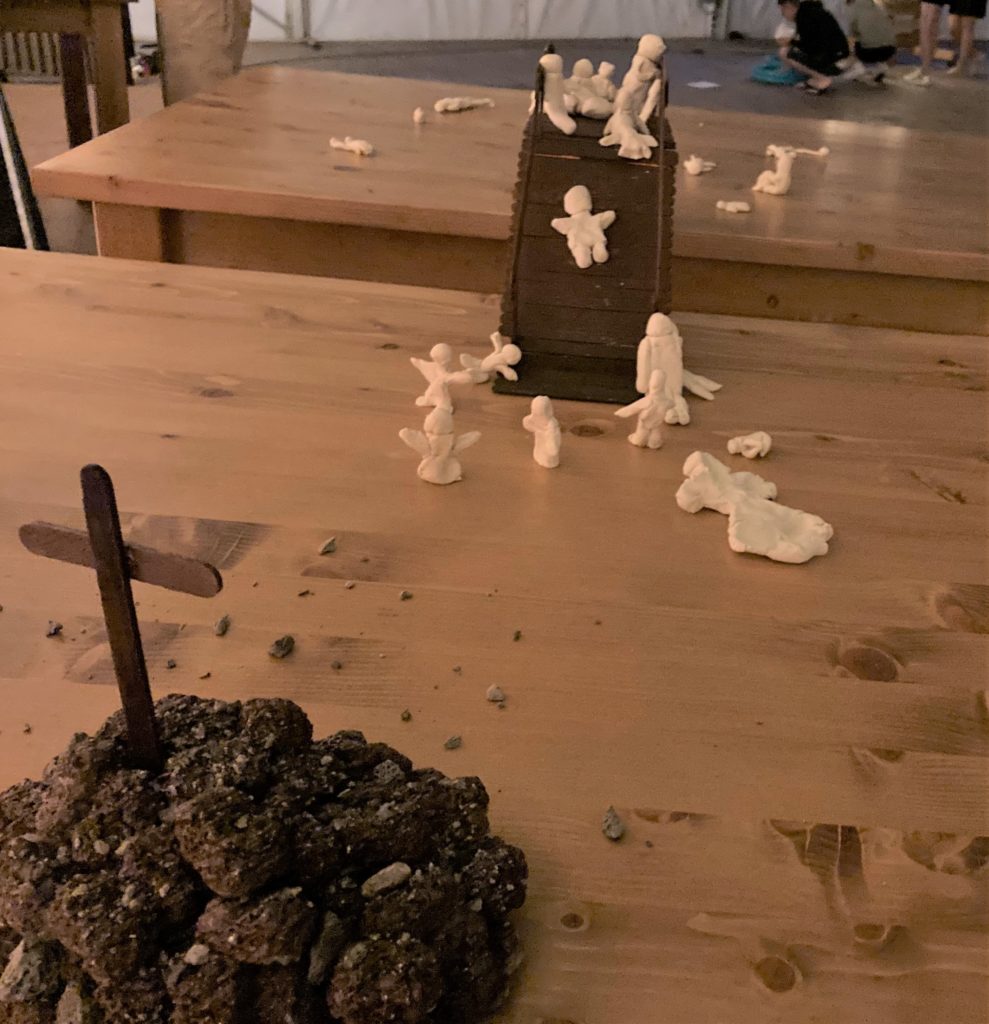(Written by Doug Sandy on 8/4/2022)
A common device for sharing the Gospel is known as the bridge diagram. It is a simple picture that shows God and man separated by a giant, un-crossable chasm: the chasm of sin. No amount of human effort is able to get you across this gap. It cannot be jumped across. It cannot be scaled. We are hopelessly separated from God. However, when Jesus offered himself as a sacrifice for our sins, he created a bridge by which the chasm could be crossed. No other method exists but the grace of God extended through Jesus. All we need to do is confess Jesus Christ as our Lord and we are saved. We cross the bridge and have restored fellowship with God.
In America, we tend to think of this act of crossing the bridge as instantaneous – a single act of faith and belief. The decision is sometimes made emotionally, and as a result, the decisions are not always genuine, and people fall away. Czechs on the other hand, spend a lot of time thinking through their decision. It can take years of deliberation, but when the decision is made, it sticks.
Last night at camp, students were invited to participate in “Labyrinth” – an activity specifically designed to help them process the gospel messages that they have heard during the week and reflect upon their own relationship with God. Labyrinth has multiple stations that are completed in sequence with the final station consisting of a prayer room where students are invited to ask questions or pray with camp staff.
I have shared with you a picture of one of the stations taken early in last night’s activity. Here, the bridge diagram was recreated. A small bridge spanned a chasm between two tables. One table represented fellowship with God, the other separation from Him. Students were asked to create a small clay figure that represented themselves, then place the figure in the scene wherever they thought they were in relationship to God.
This picture, seen from the side of the God, shows many people in the foreground having fellowship with Him. Some are jubilantly praising, and others are bowed before Him. Some figures are on the far table, separated from God, but most are on the bridge. These figures each represent a student that is thoughtfully processing the message of the gospel but have not yet accepted it. To round out this scene, two figures stand on God’s side of the bridge looking backward. They are beckoning to those on the bridge who are crossing over. The role of our team here is that of one of the beckoning figures. We have traveled across the globe to invite students to “taste and see that the Lord is good”. The decision is theirs.
Thank you for your faithful prayers. Please pray that God would renew us daily by His spirit and that He would continue to provide us the strength to finish well.

